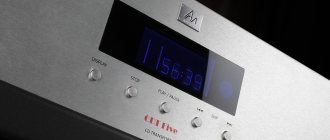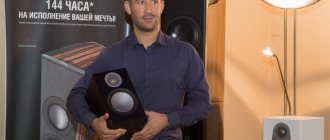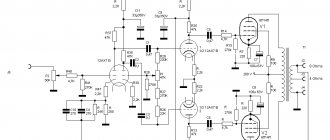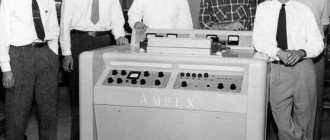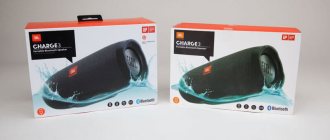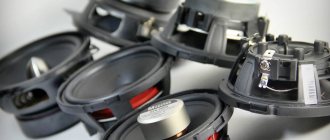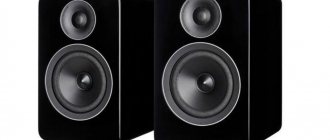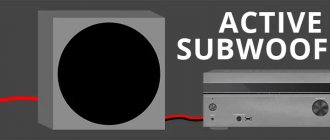Acoustics Audio Note AN-K, AN-J, AN-E - what's the difference?
Please do not take this as an advertisement for my items. The man asked - I simply answered him. And I express my PERSONAL OPINION. I now have these AN speakers: https://hi-fi.ru/auction/detail/767779 I listen to them on this system: https://hi-fi.ru/auction/detail/778182 There were models before them : AN-E/L (1998) AN-J/Sp (1996) AN-J/L (1998) AN-E/Spx (1994 in a chipboard case) AN-E/Sp (1999 in a plywood case) AN- E/SE Silver Signature (1995) Here are some photos of some of them: https://foto.mail.ru/mail/fedjarik/147 The speakers are fully revealed only in the Audio Note path of the corresponding level. Components from other companies are played differently, but, in my opinion, worse than with AN. Very critical of cables and connection diagrams. Bi-wire (4 cables) is better than jumpers. Correct placement in the room is necessary - then the sound will be smooth, without dips or bursts in the frequency response. Although neither “dips” nor “spikes” are typical for these columns. They are very little affected by room acoustics. Only in the most “dead” rooms can the speakers show some resonances. And then, most likely, these will be precisely the resonances of the room itself, and not the speakers. The sound is very spacious (in spatial terms), and very full-blooded (all frequency response spectra are present - in E models it starts from 18Hz at -6dB). People unfamiliar with AN sound are usually surprised - how do such small speakers (AN-J measuring 58 x 33 x 23cm) have so much bass? And how clean it is and not at all “subwoofer” (like, for example, ProAc). In my opinion, the speakers handle ALL styles of music quite easily. Maybe some “wides” (for example, Lowther PM2A in Fidelio cases) will play much faster and more nervously, maybe the Siemens-Klangfilm KL405 have a more refined voice, but with Depeche Mode and Led Zeppelin neither one nor the other cope with. Not enough bass. But the AN-E (and even the more compact model - J) has everything in order with bass. But, at the same time, AN speakers do a very good job with both opera and jazz (that’s what many people think, and these speakers are “sharpened” for). But some Dinaudio or JBL are simply too tough. Not to mention the intricacies of violin music. In my opinion, the AN sound is somewhat dry (Tannoy Lancaster 12″, for example, play more relished and “rolling”. But, somehow, at the same time, more lax). And the stereo images of the musicians “look” not in “full height” - AN’s sound images are somewhat understated. They, of course, cannot compete in scale with huge horns like the Klipsch Horn. But, in my opinion, it would be better for Ella Fitzgerald to be 150 cm tall than 350 cm, as is often the case with speakers with “large volumes” (Klipsch Horn is a prime example of this). And in “average” rooms of 15-20 square meters, and with a distance to the speakers of 2.5-3.5 m, it is difficult to imagine speakers with a larger volume than AN. In general, I like the speakers. They are “omnivorous” and sound natural and free. So in brief... A small nuance: All of the above does not apply to the speakers of the Audio Note Zero company (Zero One, Zero Two, Zero Three), and to the budget speakers of the AX series currently produced by the company. These are good speakers, but even the smallest speakers in the AN-K series are incomparably superior in terms of sound quality. In my opinion, the AN-Zero series is a purely marketing ploy by P. Qvortrup (the owner of AN), which has little to do with good sound...
Stereo system test using Audio Note components.
Our salon provides a unique opportunity to evaluate several stereo systems, entirely consisting of Audio Note . Audio Note is the only high-end company in the world to design and manufacture complete analogue and digital audio reproduction systems entirely in-house. Audio Note's range of products includes cartridges, tonearms, digital-to-analog converters, preamps and amplifiers, speakers, speaker stands and cables, plus a wide selection of carefully selected high-quality components.
Each individual component is subject to the same sound quality assessment criteria, meaning that all components produced by Audio Note will always be fully compatible with each other. The company's owner, internationally recognized audio guru Peter Qvortrup, views the sound reproduction system as a single whole, in which complementary design parameters and their implementation lead to an incredible level of emotional involvement and musical pleasure unattainable in other systems.
All audio devices manufactured by Audio Note have many modifications. Whether a particular modification belongs to a certain level is determined by the quality of the components, the type of transformer, lamps, the name of the cable, and even the circuit design. According to the Audio Note ideology, all components of a music system should be on the same level.
We invite you to get acquainted with the stereo system we assembled based on third-level components according to the Audio Note :
1. AN-E LX HE Signature speaker systems
The AN-E speakers are perhaps the most efficient mid-size full-range speakers on the audio market today. AN-E frequency range is from 18 Hz to 23 kHz (-6 dB), sensitivity is more than 98(!) dB/m, dynamic overload margin is more than 108 dB. Ultra-high efficiency is maintained across the entire frequency band, making the AN-E extremely well suited for use with high-quality tube amplifiers, including low-power single-ended amplifiers. The carefully chosen shape of the AN-E's bass reflex cabinet improves dispersion and bass response. The body is held together by internal rods and little internal damping is used. The speakers are carefully selected and coordinated with each other.
2. M5 Phono Signature Level 3 Linear Preamplifier
Line stage using 5687 tubes and Audio Note branded tantalum resistors. The power supply is based on the patented M10 power supply design. Audio Note proprietary output transformer made of copper wire with a U-shaped core. The phono version of the preamplifier is equipped with a phono stage using 6072A tubes.
- Output transformers Copper winding, double U-shaped core IHiB
- Audio Note Signal Capacitors, Copper Foil
- Audio Note resistors, tantalum film, 1 W
- Power Supply Transition Capacitors Standard Capacitors
- Main power supply capacitors Kerafin and standard capacitors
- Phono cascade wires Copper wire
- Audio Note phono cascade capacitors made of copper-mylar foil
- Line cascade wires Copper wire
- Network connector wiring Copper wire
- Network cable Standard copper cable
- Phono stage tubes GE 6072a/12AY7 x 3
- Line stage tubes 1 x EI ECC82 and 1 x Philips 5687WB
- Output impedance 600 ohms (balanced/unbalanced)
- Output connectors 1 x XLR,
- 2 x Silver Plated RCA Audio Note
- Input Jacks 6 x Silver Plated RCA Audio Note
- Volume/Balance Controls 2 x Audio Note Attenuators
- ELMA input switch
3. Conqueror Silver Signature Power Amplifier
8-watt single-ended Class A tube stereo amplifier, no feedback. Power supply based on tube rectifiers with choke filtering. The circuits use Audio Note copper foil signal capacitors, Beyschlag metal film resistors, and standard electrolytic capacitors. Audio Note output transformer on IE-shaped core. Lamp equipment: 2 x 300B, 2 x 6SN7, 1 x 5U4G.
4. CD player CD4.1x
The CD-4.1x is a completely new CD player like no other in the audio industry. It uses a Two/II CD transport with an upgraded DAC from the CD-2.1x Mk.II, Audio Note tantalum resistors and Black Gate capacitors on the digital printed circuit board, and Audio Note copper foil capacitors on the output stage. The device is based on the OTO chassis. Particular attention is paid to the CD-4.1x power supplies - even the display has its own power supply to reduce internal noise. Direct synchronized communication between the transport and the DAC gives the CD-4.1x supreme musicality with rich, rich texture.
5. Record player
Twin-engine version of the TT One with increased torque. Just like Audio Note's more expensive turntables, the TT2 uses sub-chassis suspension, which provides better isolation from external vibrations and allows for more precise and accurate reproduction of the source material. The TT2 player uses a three-point sub-chassis suspension derived from the award-winning Systemdek IIX turntable. The disc is made of acrylic, the drive is carried out by a round rubber belt.
We installed an Audio Note Arm Two V2 tonearm and an Audio Note IQ3 MM head on the player.
6. Audio Note AN-Vx interconnect cables and Audio Note AN-Spe acoustic cables were used. It should be noted that experiments with different network cables revealed an interesting effect - this music system plays best with simple supplied network cables! We have never encountered anything like this before.
The sound of the resulting system can safely be called outstanding; it rarely happens when the character of the sound delivery is liked by all the employees of the salon without exception. First of all, the sound can be described as flawlessly natural. The set perfectly shows the difference in the sound of recordings from different years and perfectly conveys the performing style. Audio Note CD players do not use oversampling, digital or analog filtering after the DAC. As a result, CDs sounded without excessive harshness, reminiscent of an analog source. However, the system performed best when playing recordings; naturalness and emotional involvement increased by an order of magnitude. Single-ended tube amplifiers without negative feedback are an uncompromising technical solution, but rarely have high enough power. In our case, the output power is only 8 W and the situation was saved by speaker systems with a sensitivity of 98 dB. In a room of 30 square meters, the volume was sufficient in abundance, the bass turned out to be deep and dynamic. The sensitivity of the speakers also ensured high resolution of the system as a whole, without creating a feeling of excessive detail. The set has no genre restrictions and is absolutely universal. The total cost of the entire system is 2,300,000 rubles.
AN-K Speaker system
AN-K are compact loudspeakers with a frequency range from 50 Hz to 20 kHz (-6 dB) and a sensitivity of about 90 dB/m.
All speaker pairs are carefully matched to each other. Individual speakers are first screened, then speakers are paired, and finally each speaker is individually matched to a control curve.
The AN-K's body is constructed from materials that complement the performance of the drivers. So, instead of damping cabinet resonances, we place them in frequency bands where they complement and enhance their performance. This original and rather complex method helps ensure maximum efficiency and energetic playback.
AN-K have two drivers (a 0.75″ dome tweeter made of lightweight polymer and an 8″ paper cone woofer) in each housing and operate a very wide frequency range for their modest size. Unlike many speakers of this size, the AN-Ks have relatively high sensitivity, offering a light amplifier load, making them very suitable for our excellent low-power tube amplifiers.
The AN-K enclosed speaker cabinets have been designed to be installed close to the edges of the room (in this case, efficiency in the low-frequency range is significantly increased). When positioned in this manner, they will perform better than any speaker of a similar size, regardless of brand, thanks in part to the shallow cabinet and wide front baffle offering the drivers the best possible operating conditions - as if they were mounted in a wall. This provides the most natural sound field with the widest and most uniform dispersion.
The crossover is simple, essentially of the first order, assembled on a circuit board with wire connections, on copper or silver wound coils with air cores (depending on the model). Internal wiring is 99.99% pure copper or 99.99% pure Audio Note (UK) silver cable, depending on the specific model.
The weight of one loudspeaker without a stand is ~11 kg.
Dimensions of all AN-K models: 470 x 275 x 190 mm (HxWxD)
For optimal tonal balance, the AN-K should be mounted on heavy-duty studded stands approximately 21” tall. To install AN-K loudspeakers, we recommend AN-K Stands matte or glossy, black or white
The body is made of Russian birch plywood, covered on all sides with natural veneer (21 options with standard varnish or 18 veneer options with the High Gloss version)
According to Better Sound 優聲學, Audio Note (UK) chief developer Andy Grove uses the AN-K SPx SE at home.
You can get additional information on these speaker systems on the manufacturer's English website
Due to Audio Note's (UK) ongoing research and development programs, specifications are subject to change without notice. In addition, images on the website may differ from current models or specifications.
Tests and reviews :
AN-K/Lx
The Audio Beatnik - April, 2022 - Drew Gagliano - “Reviewing Reality: The Audio Note UK Experience”
HI-FI 音響 – May 2022 – “Audi Note AN-K/Lx”
AN-K-SPe
Fairaudio.de – Marz 2022 – Michael Brus – « Audio Note AN-K/SPe. "Beruhigend dramatisch"
Dagogo - May 2015 - Jack Roberts - “Audio Note AN-K/SPe speakers Review” or translated into Russian, on the website hi-fidelity-forum.com: “Audio Note AN-K Spe. Acoustics review"
Audio Asylum – December 2003 – RGA – “Review: Audio Note AN-K Spe Speakers”
Part-Time Audiophile – June 2014 – Kirsten Brodbeck-Kenney – “Newport 2014: The Minimalist and Audio Note UK”
AN-K-SPx SE
Better Sound 優聲學 – 2016年12月 – “給自己的歌,AN-K-SPx SE”

